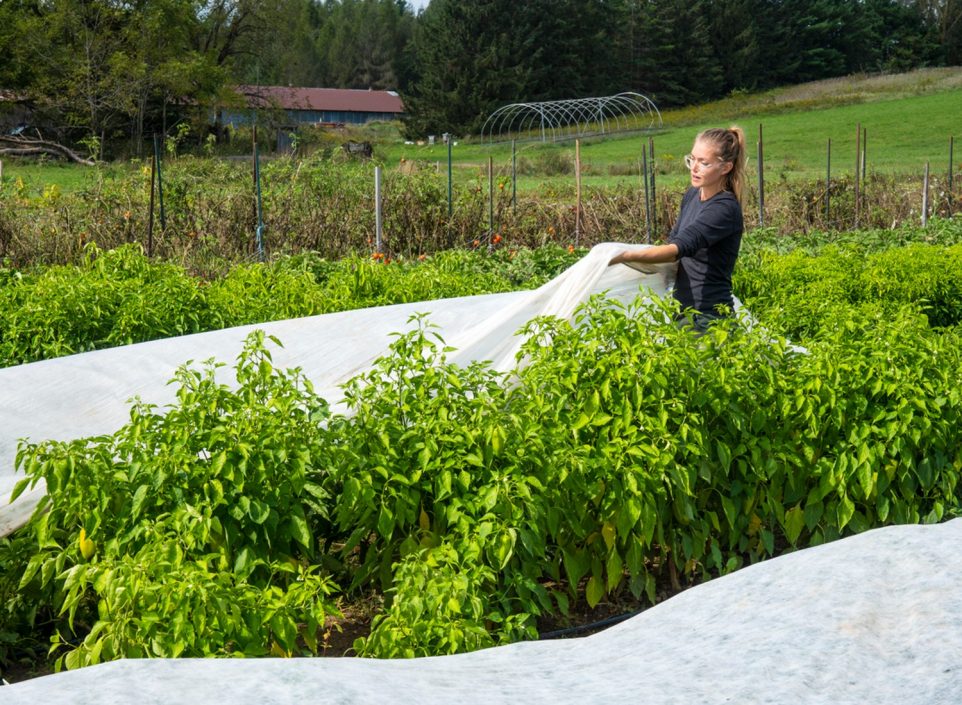Everything You Need To Know About Plant Frost Protection

The unpredictable swing from warm sunny days back to freezing temperatures can catch any gardener off guard—me included. Just when you think spring has settled in, a sudden frost threatens to undo all your hard work. Here’s a little guide on how I deal with these chilly surprises to protect my beloved plants.
Why Does Frosting Happen?
Frost occurs when the temperature drops to at or near the freezing point of water, causing ice crystals to form on exposed surfaces like plant leaves and stems. This can happen even when air temperatures are slightly above freezing, as the surfaces themselves cool to freezing temperatures. Freezes happen when the air temperature drops below 32°F and stays there for a significant period, causing deeper and more extensive damage to plants, as ice forms inside the plant cells themselves, potentially rupturing cell walls.
Practical Steps for Plant Frost Protection
When you first hear the weather forecast announcing an unexpected frost, it’s crucial to know which plants are tough enough to handle the cold and which ones will need some help. Hardy vegetables like kale, spinach, and broccoli laugh in the face of frost—they don’t need any special treatment. But tender veggies and most of your herbs, like basil or cilantro, will need some extra care to survive.
Now, for those plants that definitely won’t make it through the frost without help, like your tomatoes, cucumbers, and summer squash, you’ve got to act fast. These guys are sensitive and have no business being out in freezing temperatures. If you’ve already planted them outside and the forecast spells trouble, you might need to either cover them up or, if possible, dig them up and bring them indoors just until the cold snap passes.
Insulation and Covering
Protecting plants by covering them with floating row covers or frost cloths can provide an insulating layer against cold air. Make sure to secure these covers so they extend to the ground, trapping warmer air inside and preventing it from escaping. For added insulation, especially for smaller, more delicate plants, consider using cloches made from materials like cut plastic bottles.
Watering
For your more permanent fixtures like fruit trees or larger shrubs, things get a bit trickier. Spraying them with water before the sun goes down can create a protective layer of ice that insulates the plants against colder temperatures. Sounds counterintuitive, right? But it’s a trick used by many orchard growers. Just remember, this method needs continuous application until the frost passes, or it can backfire.
Utilizing Heat Sources
Another nifty trick for trees and bigger plants is using string lights. No, not the Christmas decoration kind (make sure they’re the safe, outdoor ones), but wrapping them around the plants can help provide just enough heat to ward off the frost. Make sure whatever you use is safe for outdoor use and won’t cause a fire hazard.
Applying a thick layer of mulch around your plants can help insulate the soil and roots from sudden temperature drops. Materials like straw, leaves, and wood chips are effective in keeping the soil temperature more stable.
Plant Placement
Be strategic about where you plant sensitive species. Planting next to south-facing walls, which can radiate residual heat, or using the landscape to shelter plants from cold winds can make a significant difference. Avoid planting in low-lying areas of your garden where cold air tends to settle, creating “frost pockets.” Elevating plants or using raised beds can help prevent cold air from affecting sensitive plants.
Container plants are particularly vulnerable to frost because their roots are less insulated. Move containers to a sheltered location, wrap pots in bubble wrap or burlap for insulation, and ensure they have adequate drainage to prevent root rot.
By understanding the specific needs of your garden and preparing for cold weather events, you can minimize frost damage and ensure your plants remain healthy and vibrant through the cooler seasons. It’s also worth mentioning that while you’re scrambling to protect your plants, keep a cool head. Gardening is as much about problem-solving as it is about planting. Not every plant might make it through an unexpected frost, but with some quick thinking and improvisation, you can save most of them.